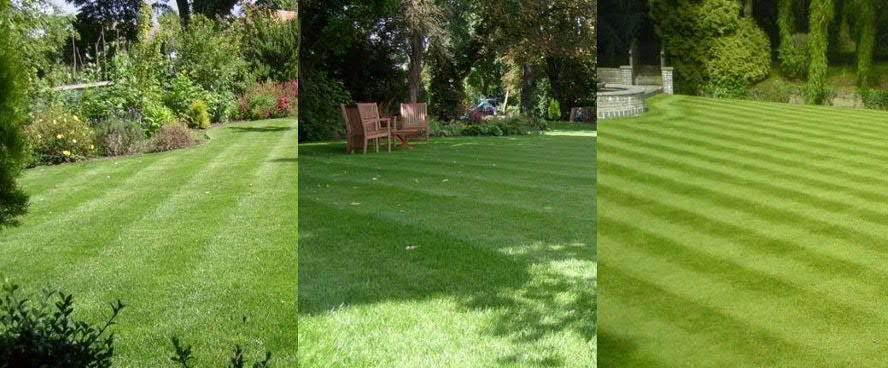
3 minute read
A Meldreth Garden
The garden shifts into another gear, the light changes, midsummer day has passed, the evenings are long and warm. The lush early summer garden gives way to the copper tones of the late summer garden and a new richer palette to the borders. Tender perennials and annuals such as dahlias, agapanthus, crocosmia, cosmos, salvias, etc. (which originated closer to the equator) are hitting their peak; many continue flowering to the first frosts if deadheaded regularly. The vegetable garden is delivering a bumper harvest, of generous quantities of beans, peas, potato, calabrese and soft fruit. I have been harvesting summer fruiting raspberries, the most delicious berry fruit we have.
The canopy has been raised on a number of trees and bushes to give more light and therefore allow a wider range of plants to grow around them. Removing the lower leaves of yellow stemmed bamboo (phyllostachys aureosulcata ‘aureocaulis’) and black bamboo (phyllostachys nigra) displays the colourful stems to best advantage.
Advertisement
Plant of the month is the sea holly (eryngiums), spiny sculptural plants. I love the metallic blue of eryngium alpinum in the late summer border. Several varieties in the garden include the perennials, eryngium alpinum ‘blue star’, eryngium variifolium, eryngium bourgatii 'Picos Blue'; eryngium agavifolium has tall spikes of green flowers and eryngium giganteum a white flowered biennial (otherwise known as Miss Willmott’s ghost) is a reliable self-seeder. Leave the flowerheads after flowering for winter interest. Eryngiums are easy to grow and will thrive in poor soil and dry conditions. Propagate perennial types by basal cuttings in spring.
Tasks in the Flower Garden
Autumn-flowering bulbs, such as autumn crocuses (colchicum), saffron crocus (crocus sativus), winter daffodil (sternbergia lutea), amaryllis and nerine bowdenii, can be planted now.
Divide congested clumps of bearded iris after flowering.
Pinks and carnations that have become leggy can be propagated by layering or by taking cuttings. Propagation improves the appearance of untidy clumps.
Start collecting seed from plants you want to grow next year, especially annuals such as marigold (calendula officinalis), opium poppy (papaver somniflora) and love-in-a-mist (nigella damascene). When coming into flower, I remove all but the white nigella and all but bright red and emperor purple opium poppies to ensure the seed lines are kept as required for my garden.
Prune June-flowering shrubs such as philadelphus and weigela after flowering.
Deadhead plants such as calendulas, dahlias, scabious and cosmos to keep them flowering.
When flowers fade, deadhead hybrid tea rose's, prune to an outward facing bud. For florida and rambler roses pinch out individual flowers. For rosa moyesii and rosa rugosa where you want hips, don't deadhead.
Tasks in the Vegetable Garden
Continue harvesting vegetables and fruit. Dig up garlic when the leaves begin to yellow and dry thoroughly before storing.
Ensure ventilation in the greenhouse to help control fungal diseases and maintain an even temperature; spraying will deter red spider mites that devastate cucumbers and melons.
Thin out the number of small apples on apple trees to improve the size and quality of fruit, especially if an apple tree has a biennial fruiting tendency like Fuji, Nicoter (Kanzi®) and Spencer varieties.
Summer prune apple and pear trees to maintain height and shape, especially step over and espalier trees. This will also boost fruit size.
Make sure you keep new plants well-watered, using grey water where possible.
Pick courgettes before they become marrows.
Sow chard, chicory and Chinese greens.
Stop harvesting rhubarb and asparagus so they build up reserves for next year.
Iain McPhee mcpheia1@gmail.com
Spotted Flycatchers in Meldreth
It’s Spotted Flycatcher season again! The first sighting in Meldreth in 2023 was on 7th May – the same date as was recorded in 2022. There were two birds and their behaviour suggested they were a pair. They were seen regularly in their usual haunt from 7th to 17th May, but not seen after that.
There are many places where the birds can go to feed and nest around the village. Luckily, we know that there is a pair nesting not far from the original site. Are they our original pair? We will continue to watch to see if either bird is ringed. We will also continue to monitor their behaviour to see whether or not they produce eggs and chicks.
Jan Butchers
Please have a look at our online auction www.jumblebee.co.uk/meldrethmatters
Bid for flights, holiday cottages, craft items and much more!








